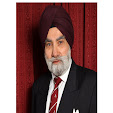Pyrrhic Victory for “Open Air” Funeral Pyres !
It is not clear how Davender Ghai managed to confuse so many. These included the Newcastle City Council, the legal system, religious leaders and the British media, including the BBC.
Ghai was allowed legal aid and the cost to the tax payer would run into hundreds of thousands of pounds. He was receiving legal aid to fight his case for “open air” funeral pyres traditional Hindu style. Pictures of such pyres in open fields were shown in media reports and on BBC peak time viewing. Misleading statements by BBC that this was also a Sikh practice was challenged and an apology extracted.
However, when appearing before the Court of Appeal, Davender Ghai allegedly made a complete u-turn and agreed that ““his beliefs could be satisfied within a building”! The Court has now allowed his appeal and that is hailed as mighty victory by Mr Ghai and his jubilant supporters (including some misguided Sikhs). “Judges decided the pyre would be lawful after Mr Ghai said it could include walls and a roof with an opening.” He had been refused a permit by the Newcastle City Council in 2006 for a cremation site in a “remote part of Northumberland”.
Four years later, after involving Hindu and Sikh religious leaders – including the President of the Shromani Gurdwara Parbandhak Committee (SGPC), Avtar Singh Makkar - and governments, he believes he has won a great victory for human rights in the UK after agreeing to “open” funeral pyres, albeit, in a closed building with a hole in the roof! That leaves the air pollution legislation and the method of burning the dead body to be sorted out, which can take years and Mr Ghai, 71, may not benefit even if a solution is found in due course.
Newcastle City Council had refused permission for traditional Hindu style pyres out in the open. That is how the media, including the BBC understood it. The question is if the Council would have taken a different approach if Davindra Ghai and those egging him on had agreed to funeral pyres within a building in the first place. Most probably, the Council would have done what most councils are likely to do now. As a spokesman for the Council is reported to have said, if there are applications submitted for “open” funeral pyres indoors, public health legislation will have to be considered. How do you burn a dead body in an enclosed space “traditional Hindu style” i.e. on a huge pile of wood, with an opening in the roof without polluting the environment?
According to the spokesman, “Furthermore, the method of burning associated with funeral pyres is not covered by any regulations which currently only apply to cremators powered by gas or electricity which are designed to maintain environmental standards, in particular air quality…Following the judgment, all local authorities will await further guidance from the Home Office and Defra as regards any proposed regulations or legislation which may control the proposed manner of cremation to ensure environmental standards and public health are protected."
In short, Davenndra Ghai and his friends are more or less where they were!
The case may have exposed some flaws in the system. It certainly exposed the lack of understanding of the Sikh religious code, the “Sikh Reht Maryada”, on the part of some Sikhs, gurdwaras and even the President of the SGPC, S. Avatr Singh Makkar.
Gurmukh Singh (UK)
E-mail: sewauk2005@yahoo.co.uk
Subscribe to:
Post Comments (Atom)

No comments:
Post a Comment